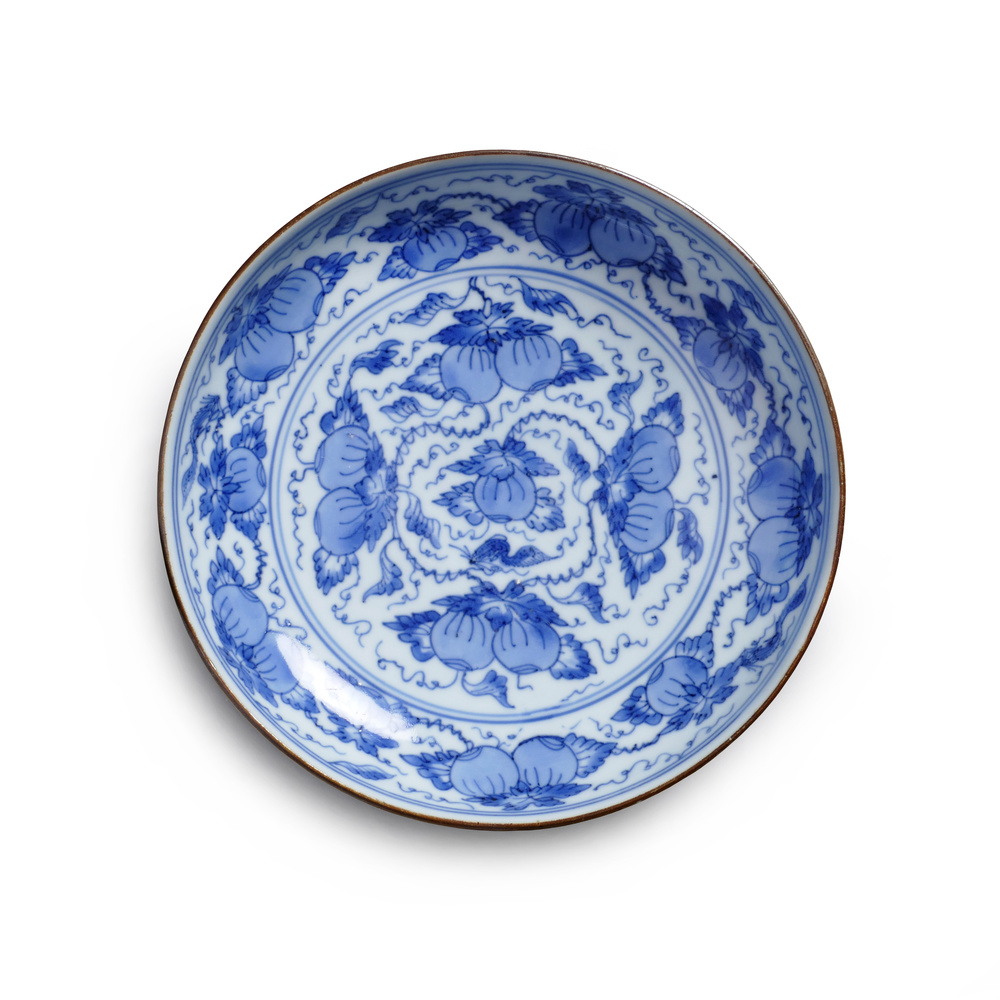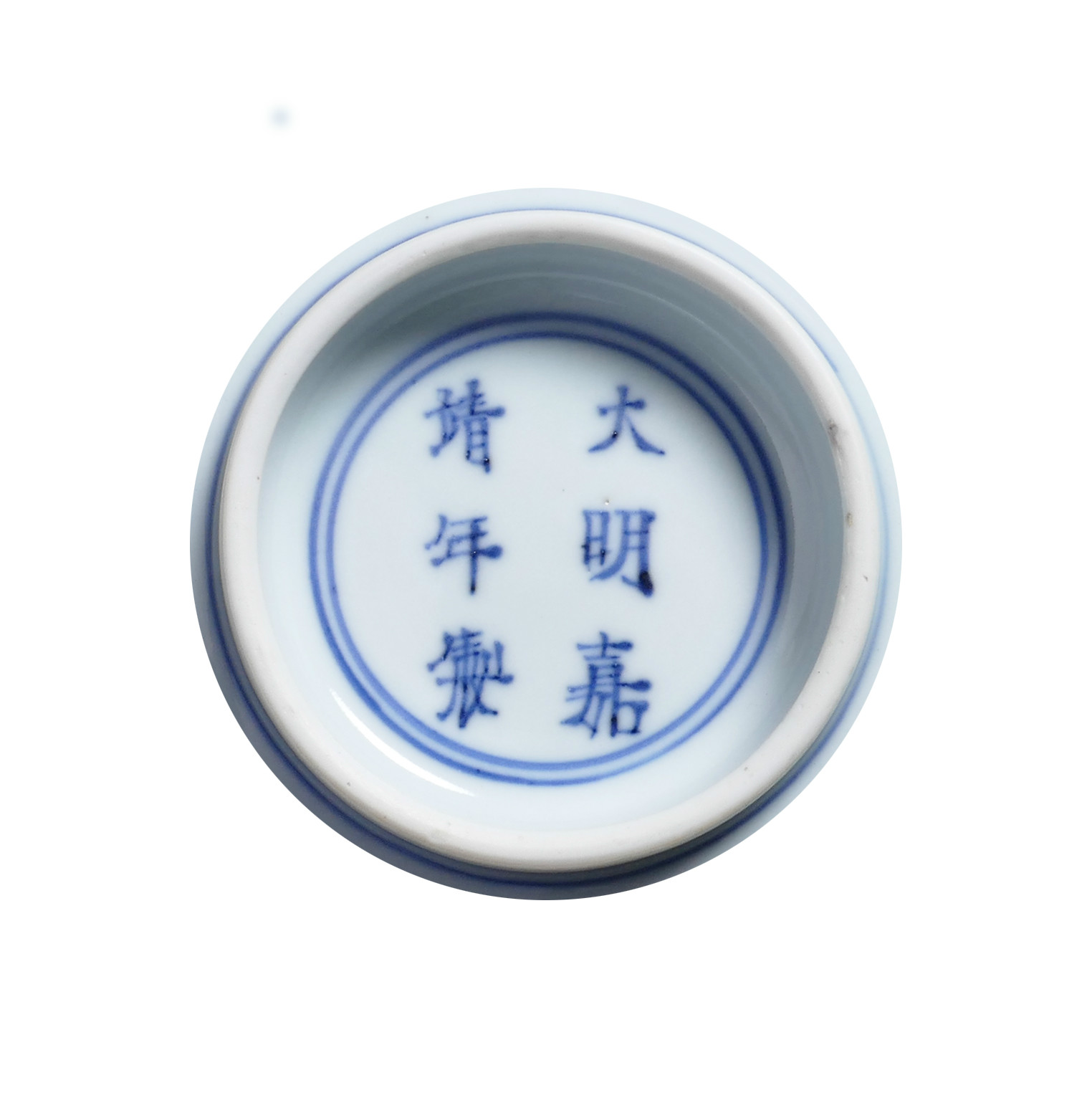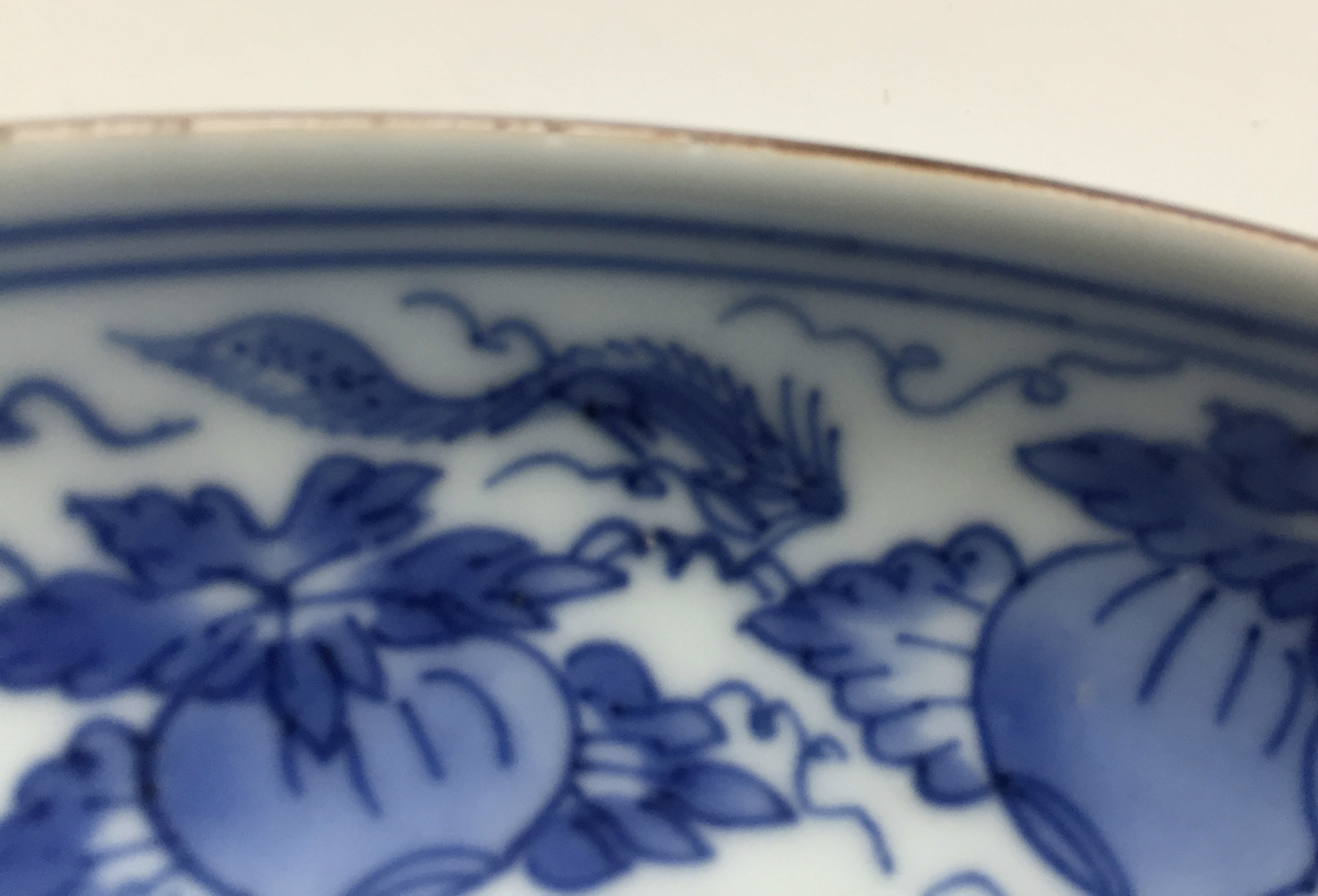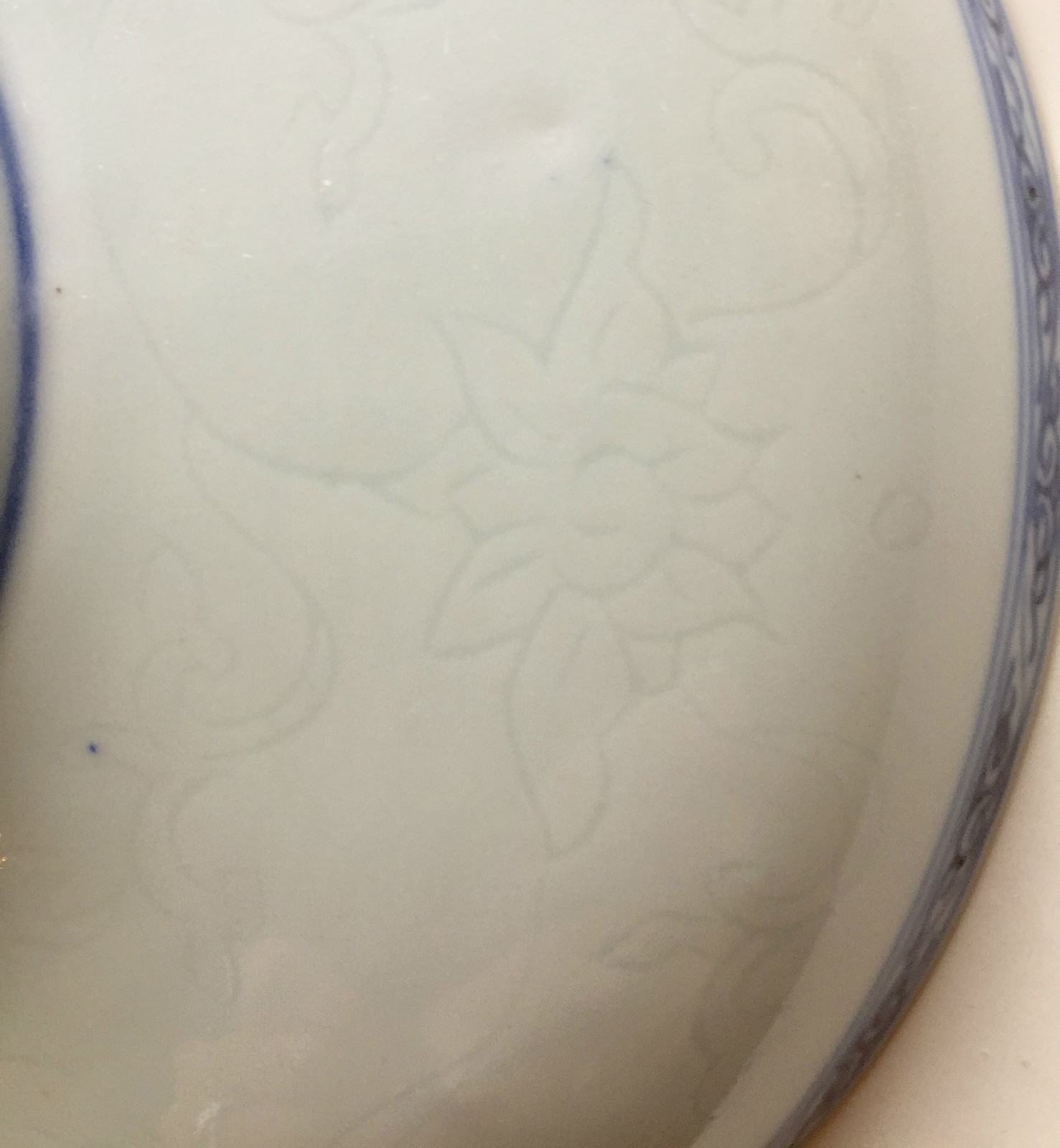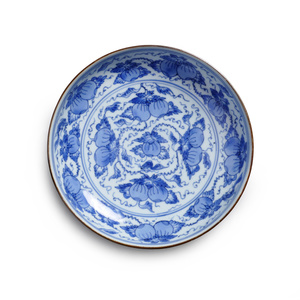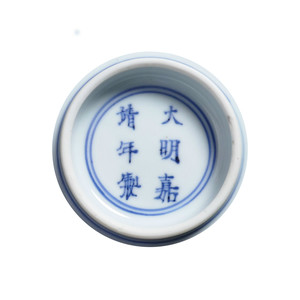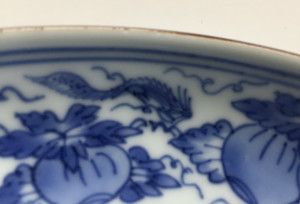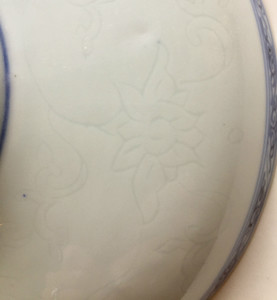Kangxi, circa 1662-1680
The dish is supported on a high straight foot and has sharply curved sides going straight up to the rim. The inside is painted in underglaze blue with gourds amidst foliage and curling tendrils, interrupted by a double-line border. There are three squirrels hidden between the leaves and tendrils. The exterior is finely incised under the glaze with a lotus freeze between an underglaze blue scrolling border at the rim and a I double-line border at the foot. The recessed base is inscribed with a six-character Jiajing mark within a double circle. The rim is dressed brown.
16.7 cm diameter
Provenance: Formerly in the collection of Jan Habbema, acquired in Indonesia prior to 1936, thence by descent in the family. Jan Habbema formed a vast collection of Chinese art whilst stationed as a Dutch high official in Bojonegoro, Indonesia, until 1936.
The present sturdily but well potted dish is painted in light tones of blue, often seen in the early Kangxi period. The apocryphal Jiajing (1522-1566) mark is boldly written, which is another feature of this period. Brown-dressed rims, first introduced in the Chongzhen period (1628-1644) among wares for the Japanese market, became fashionable on domestic-market wares during the successive Shunzhi period (1645-1661). The incised decoration, anhua, is very rare on blue and white porcelains from this period, as it suddenly went out of fashion after the Chongzhen reign. The combination of gourds and squirrels symbolizes fertility and the wish for never-ending generations of sons and grandsons. More often, squirrels are depicted in combination with grapes, which implies the same wish.
There is a dish, with identical reverse and painted inside with a typical Shunzhi-style decoration of birds and flowers, in the Topkapi Saray Museum, Istanbul. Two further dishes of similar unusual shape, painted with figural scenes, were formerly in the collection of John and Julia Curtis, and another one is in the Metropolitan Museum of Art, New York.
A pair of similar dishes was sold at Sotheby's Hong Kong, 30th to 2nd May 1991, lot 45
BFE 04 清康熙 青花松鼠瓜果紋盤
時代:清 康熙,約1662至1680年。
特徵:內側描繪葉子與捲鬚連綿的瓜果紋,葉鬚之間可見三隻松鼠。底部有偽「大明嘉靖年製」底款。
尺寸:直徑16.7公分。
來源:原為荷蘭駐印尼的高級官員Jan Habbema在1936年前於印尼購得之私人收藏,此後家族傳承。
